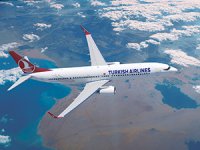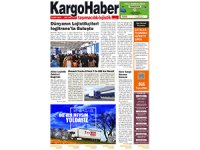- Industry losses are expected to reduce to -$9.7 billion (improved from the October 2021 forecast for an $11.6 billion loss) for a net loss margin of -1.2%. That is a huge improvement from losses of $137.7 billion (-36.0% net margin) in 2020 and $42.1 billion (-8.3% net margin) in 2021.
- Industry-wide profitability in 2023 appears within reach with North America already expected to deliver an $8.8 billion profit in 2022.
- Efficiency gains and improving yields are helping airlines to reduce losses even with rising labor and fuel costs (the latter driven by a +40% increase in the world oil price and a widening crack spread this year).
- Industry optimism and commitment to emissions reductions are evident in the expected net delivery of over 1,200 aircraft in 2022.
- Strong pent-up demand, the lifting of travel restrictions in most markets, low unemployment in most countries, and expanded personal savings are fueling a resurgence in demand that will see passenger numbers reach 83% of pre-pandemic levels in 2022.
- Despite economic challenges, cargo volumes are expected to set a record high of 68.4 million tonnes in 2022.
“Airlines are resilient. People are flying in ever greater numbers. And cargo is performing well against a backdrop of growing economic uncertainty. Losses will be cut to $9.7 billion this year and profitability is on the horizon for 2023. It is a time for optimism, even if there are still challenges on costs, particularly fuel, and some lingering restrictions in a few key markets,” said Willie Walsh, IATA’s Director General.
1, Outlook Drivers
Revenues are rising as COVID-19 restrictions ease and people return to travel. The challenge for 2022 is to keep costs under control.
“The reduction in losses is the result of hard work to keep costs under control as the industry ramps up. The improvement in the financial outlook comes from holding costs to a 44% increase while revenues increased 55%. As the industry returns to more normal levels of production and with high fuel costs likely to stay for a while, profitability will depend on continued cost control. And that encompasses the value chain. Our suppliers, including airports and air navigation service providers, need to be as focused on controlling costs as their customers to support the industry’s recovery,” said Walsh.
Revenues
Industry revenues are expected to reach $782 billion (+54.5% on 2021), 93.3% of 2019 levels. Flights operated in 2022 are expected to total 33.8 million, which is 86.9% of 2019 levels (38.9 million flights).
- Passenger revenues are expected to account for $498 billion of industry revenues, more than double the $239 billion generated in 2021. Scheduled passenger numbers are expected to reach 3.8 billion, with revenue passenger kilometers (RPKs) growing 97.6% compared with 2021, reaching 82.4% of 2019 traffic. As pent-up demand is released with the easing of travel restrictions, yields are expected to rise 5.6%. That follows a yield evolution of -9.1% in 2020 and +3.8% in 2021.
- Cargo revenues are expected to account for $191 billion of industry revenues. That is down slightly from the $204 billion recorded in 2021, but nearly double the $100 billion achieved in 2019. Overall, the industry is expected to carry over 68 million tonnes of cargo in 2022, which is a record high. As the trading environment softens slightly, cargo yields are expected to fall 10.4% compared with 2021. That only partially reverses the yield increases of 52.5% in 2020 and 24.2% in 2021.
Expenses
Overall expenses are expected to rise to $796 billion. That is a 44% increase on 2021, which reflects both the costs of supporting larger operations and the cost of inflation in some key items.
- Fuel: At $192 billion, fuel is the industry’s largest cost item in 2022 (24% of overall costs, up from 19% in 2021). This is based on an expected average price for Brent crude of $101.2/barrel and $125.5 for jet kerosene. Airlines are expected to consume 321billion liters of fuel in 2022 compared with the 359 billion liters consumed in 2019.
War in Ukraine is keeping prices for Brent crude oil high. Nonetheless, fuel will account for about a quarter of costs in 2022. A particular feature of this year’s fuel market is the high spread between crude and jet fuel prices. This jet crack spread remains well above historical norms, mostly owing to capacity constraints at refineries. Under-investments in this area could mean that the spread remains elevated into 2023. At the same time, high oil and fuel prices are likely to see airlines improve their fuel efficiency—both through the use of more efficient aircraft and through operational decisions.
- Labor: Labor is the second highest operational cost item for airlines. Direct employment in the sector is expected to reach 2.7 million, up 4.3% on 2021 as the industry rebuilds from the significant decline in activity in 2020. Employment is still, however, somewhat below the 2.93 million jobs in 2019 and is expected to remain below this level for some time. Unit labor costs are expected to be 12.2 cents/available tonne kilometer (ATK) in 2022, which is essentially back to 2019 levels when it was 12.3 cents/ATK.
The time required to recruit, train, complete security / background checks, and perform other necessary processes before staff are “job-ready” is presenting a challenge for the industry in 2022. In some cases, employment delays may act as a constraint on an airline’s ability to meet passenger demand.
In countries where the economic recovery from the pandemic has been swift and the unemployment rate is low, tight labor markets and skill shortages are likely to contribute to upward pressure on wages. The industry’s wage bill is expected to reach $173 billion in 2022, up 7.9% on 2021, and disproportionate to the 4.3% increase in total jobs.
Macro-Economic Factors
The global macroeconomic backdrop is critical for the industry outlook. The forecast incorporates an assumption for solid global GDP growth of 3.4% in 2022, down from the strong 5.8% rebound last year. Inflation has risen and is expected to remain elevated throughout 2022, waning over the course of 2023. And, while nominal interest rates are rising, real interest rates are expected to remain low or negative for a sustained period.
2, Risk Factors
There are a number of risk factors associated with this outlook.
War in Ukraine
The impact of the war in Ukraine on aviation pales compared with the unfolding humanitarian tragedy. The outlook assumes that the war in Ukraine will not escalate beyond its borders. Among the many negative impacts of an escalation for aviation, rising fuel costs and a dampening demand due to lowered consumer sentiment would be paramount.
- Passenger: Combined, the Russian international market, Ukraine, Belarus, and Moldova accounted for 2.3% of global traffic in 2021. In addition, about 7% of international passenger traffic (RPK) would normally transit Russian airspace (2021 data), which is now closed to many operators, mostly on long-haul routes between Asia and Europe or North America. There are significantly higher costs for re-routing for those carriers affected.
- Cargo: Just under 1% of global freight traffic originated in or is transited through Russia and Ukraine. The greater impact is in the specialized area of heavy-weight cargo where Russia and Ukraine are the market leaders, and the corresponding capacity loss will be difficult to replace. And about 19% of international cargo shipments (CTKs) transits through Russian airspace (2021 data). Carriers impacted by sanctions face higher costs for re-routing.
Inflation, Interest Rates, and Exchange Rate
Interest rates are rising as central banks combat inflation. Aside from those carrying debt (who will see inflation devaluing their debts), inflation is harmful and has the economic dampening effect of a tax by reducing purchasing power. There is downside risk to this outlook should inflation continue to rise, and central banks continue to hike interest rates.
Moreover, the record strength of the US dollar, if it continues, will have a negative impact as a strong US dollar is growth dampening in general. It increases the local-currency price of all USD-denominated debt, and adds to the burden of paying for USD-denominated fuel imports as well.
COVID-19
The underlying demand for travel is strong. But government responses to COVID-19 ignored World Health Organization advice that border closures are not an effective means of controlling the spread of a virus. The outlook assumes that strong and growing population immunity to COVID-19 means there will not be a repeat of these policy mistakes. There is, however, downside risk should governments return to knee-jerk border-closing responses to future outbreaks.
“Governments must have learned their lessons from the COVID-19 crisis. Border closures create economic pain but deliver little in terms of controlling the spread of the virus. With high levels of population immunity, advanced treatment methods, and surveillance procedures, the risks of COVID-19 can be managed. At present, there are no circumstances where the human and economic costs of further COVID-19 border closures could be justified,” said Walsh.
China
China’s domestic market alone accounted for about 10% of global traffic in 2019. This outlook assumes a gradual easing of COVID-19 restrictions in the second half of 2022. An earlier move away from China’s zero COVID policy would, of course, improve the outlook for the industry. A prolonged implementation of the COVID-19 policy will continue to depress the world’s second largest domestic market and wreak havoc with global supply chains.
3. Regional Round Up
Financial performance in all regions is expected to improve in 2022 compared with 2021 (all regions improved in 2021 compared with 2020 as well).
North America is expected to continue to be the strongest performing region and the only region to return to profitability in 2022. Supported by the large US domestic market and the re-opening of international markets, including the North Atlantic, net profit is forecast to be $8.8 billion in 2022. Demand (RPKs) is expected to reach 95.0% of pre-crisis (2019) levels, and capacity 99.5%.
Europe: In Europe, the Russia-Ukraine war will continue to disrupt travel patterns within Europe and between Europe and Asia-Pacific. However, the war is not expected to derail the travel recovery, with the region edging closer to profitability in 2022, with a net loss of $3.9 billion forecast. Demand (RPKs) is expected to reach 82.7% of pre-crisis (2019) levels, and capacity 90.0%.
For Asia-Pacific airlines, strict and enduring travel restrictions (notably in China), along with an uneven vaccine rollout, have seen the region lag in the recovery to date. As the restrictions diminish, travel demand is expected to increase quickly. Net losses in 2022 are forecast to decline to $8.9 billion. Demand (RPKs) is expected to reach 73.7% of pre-crisis (2019) levels, and capacity 81.5%.
Traffic volumes in Latin America recovered robustly in 2021, supported by domestic markets and relatively fewer travel restrictions in many countries. The financial outlook for some airlines, nevertheless, remains fragile and the region is expected to record a net loss of $3.2 billion this year. Demand (RPKs) is expected to reach 94.2% of pre-crisis (2019) levels, and capacity 93.2%.
In the Middle East, this year’s re-opening of international routes and long-haul flights in particular will provide a welcome boost for many. Region-wide, net losses are expected to narrow to $1.9 billion in 2022, from a $4.7 billion loss last year. Demand (RPKs) is expected to reach 79.1% of pre-crisis (2019) levels, and capacity 80.5%.
In Africa, lower vaccination rates have dampened the region’s air travel recovery to date. However, some catching up is likely this year, which will contribute to an improved financial performance. Net losses are forecast to be $0.7 billion in 2022. Demand (RPKs) is expected to reach 72.0% of pre-crisis (2019) levels, and capacity 75.2%.
































Türkçe karakter kullanılmayan ve büyük harflerle yazılmış yorumlar onaylanmamaktadır.